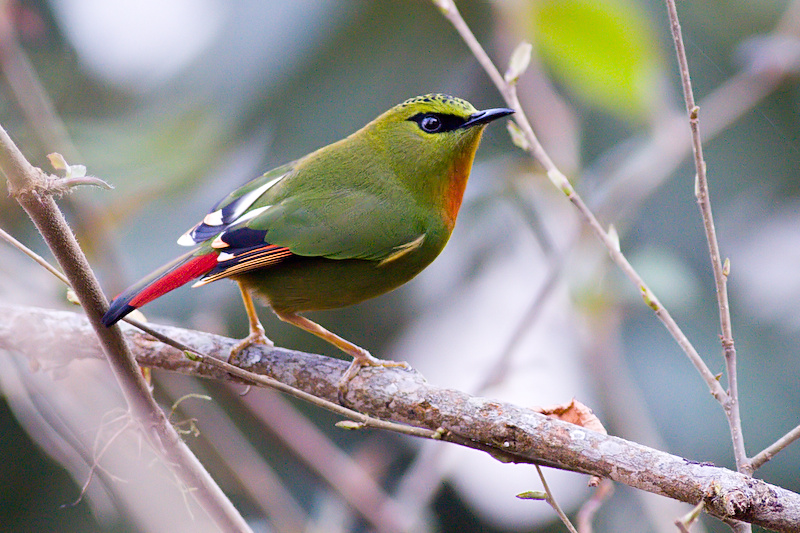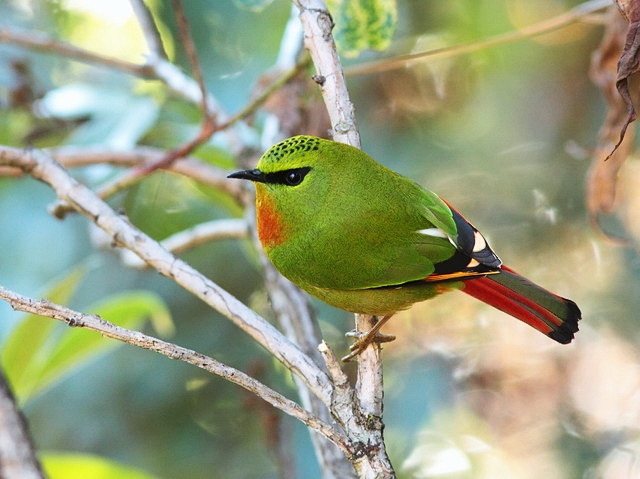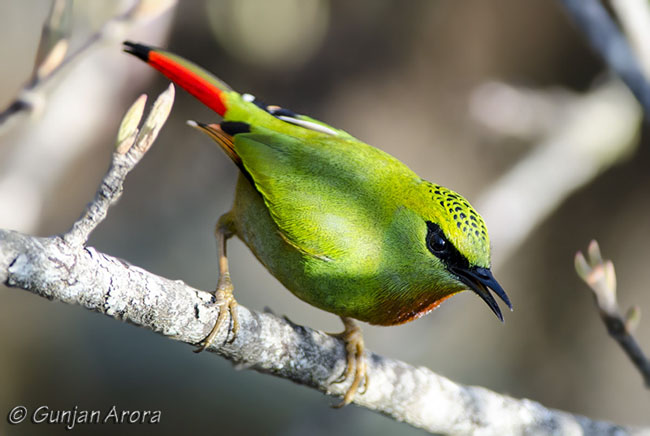
Myzornis pyrrhoura
SUBFAMILY
Timaliinae
TAXONOMY
Myzornis pyrrhoura Blyth, 1843, Nepal. Monotypic and only
member of genus. Position within family remains unclear.
OTHER COMMON NAMES
French: Myzorne queue-de-feu; German: Feuerschwдnzchen.
PHYSICAL CHARACTERISTICS
5 in (12.5 cm). Startling bright green bird with brilliant green,
red, and black tail, reddish undertail coverts, black and orange
pattern on wings, red wash on chest, scaly crown, red eyes, and
slender, black, slightly down-turned bill.
DISTRIBUTION
Himalayas, east from Nepal, and south, along the Salween Divide,
into western Sichuan, Yunan, and northeastern Myanmar.
HABITAT
Rhododendron, bamboo, juniper, and other montane forests, as
well as tree farms.
BEHAVIOR
May be seen singly, in groups of three to four, and in parties
of sunbirds, warblers, and other small babblers. Altitudinal migrant;
from 9,800–12,000 ft (3,000–3,660 m) in summer, to
6,600 ft (2,000 m) in winter.
FEEDING ECOLOGY AND DIET
Remarkably similar to unrelated sunbirds (Nectariniidae), with
whom it often associates. Continuously probes flowers, especially
rhododendrons, becoming covered with pollen, while extracting
nectar and insects. Observed by Salim Ali to hover at
flowers like a sunbird, also to run up moss-covered trunks,
creeper-like, in search of insects and spiders. Also eats berries.
REPRODUCTIVE BIOLOGY
Eggs undescribed. Observed feeding chicks at nest in May.
CONSERVATION STATUS
Not threatened.
SIGNIFICANCE TO HUMANS
The “Living Emerald” of the Himalayas, a major draw for ecotourists
trekking in Nepal and Bhutan.
Photo Gallery of - Fire-tailed myzornis




 Animalia Life
Animalia Life